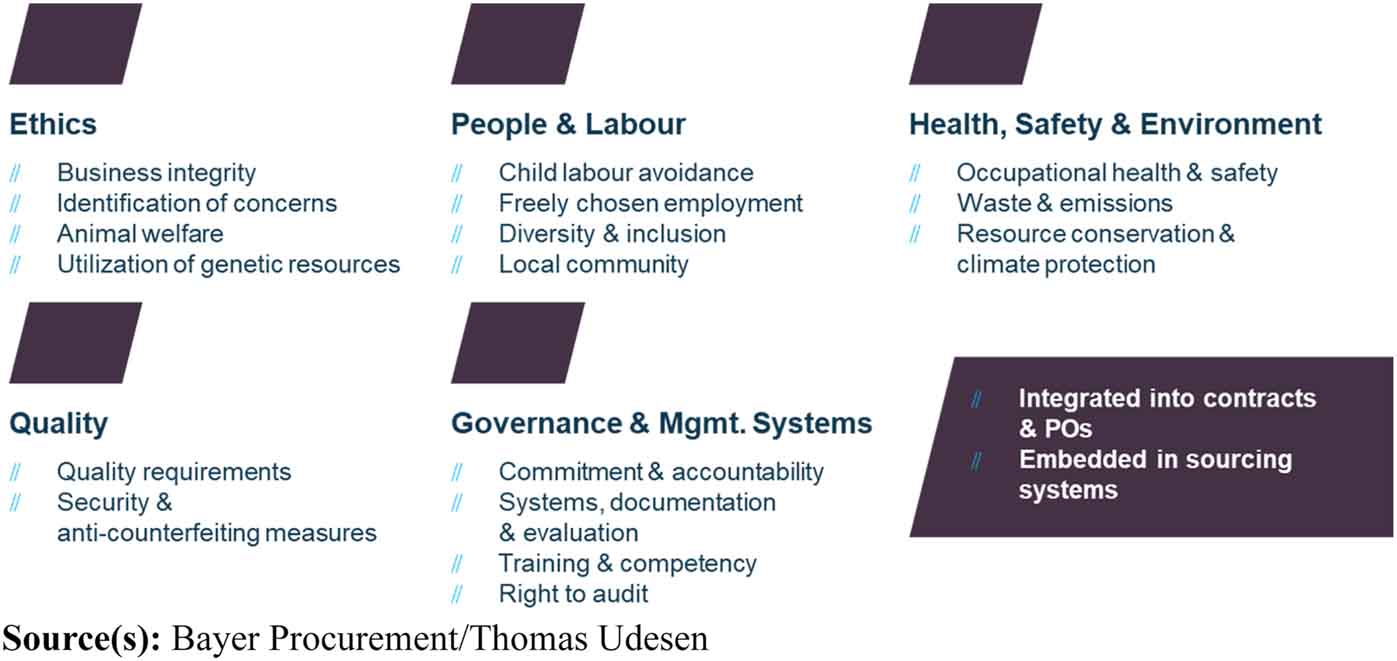
Working sustainability into a company’s supply chain can be easier said than done. Even though consumers and industry insiders alike desire progress, it is often hard won. Highlighting the struggle, reporters have found that many of Microsoft’s suppliers have increased their carbon emissions even after CEO Satya Nadella announced the company’s net zero carbon goals. Likewise, even though the fashion industry grapples with its greenhouse gas emissions, it’s estimated 96% of its emissions come from its supply chain. Major companies and entire industries find progress, much less lasting victories, hard to achieve.
Sustainability, however, is also much more than emissions: we should also be mindful of the conditions in which suppliers’ employees work. In the United States, we sometimes like to think worker abuse was a historic problem that we overcame in the early twentieth century But cheap products still need cheap labor.
Some companies have been thinking about the social impact of their supply chain for a long time, and Bayer is chief among them. In 2000, they signed onto the UN Global Compact, which champions corporate sustainability. Shortly thereafter, Bayer established its own supplier code of conduct, which they recently updated in 2019.

Because of the company’s long history of corporate sustainability, University of Arkansas professor Remko van Hoek identified Bayer as a strong case study as more and more companies seek to adopt supplier codes of conduct. Van Hoek worked with Bayer’s Chief Procurement Officer, Thomas Udesen, to glean lessons from the company’s experiences, which they published in their article “Developing a Benchmark for Supplier Code of Conducts – Lessons Learned from Bayer’s Journey Towards Sustainable Procurement and Research Opportunities.”
Van Hoek has long noted the need for a closer relationship between academia and industry. Collaboration like his with Udesen helps both academics and professionals by identifying interesting places of inquiry for researchers, while also giving professionals actionable insights to help them achieve industry goals.
How to Establish a Code of Conduct
One challenge that van Hoek and Udesen note is the lack of scientific research into supplier codes of conduct. There has been modest, though consistent, interest in these codes over the last two decades, but most of the research analyzes the content of the codes rather than measuring their impact on sustainability.
To that end, their own research seeks to fill a gap in knowledge that is desperately needed. Some research has shown that codes of conduct have been used by some companies to merely build an image for outside organizations and consumers without offering robust operating guidelines to actually help their suppliers’ sustainability efforts. Likewise, past research has also shown some suppliers don’t fully comply, making it difficult for companies to meet their sustainability goals.
Furthermore, prior research has also shown a degree of greenwashing in companies’ codes of conduct or at least establishing them with little intention to follow through. Van Hoek and Udesen point to earlier recommendations to establish internal and external support for a company’s supplier code of conduct and connecting it to a maturity framework. Doing so creates a goal of continuous improvement rather than just establishing new minimums.
Van Hoek and Udesen say that successful supplier codes of conduct will bake sustainable procurement into the core process of strategic sourcing. Companies should use these codes of conduct to help measure and evaluate current suppliers as well as select new suppliers.
And there’s no two ways around it: monitoring and reporting on these sustainability processes will cost both the company and their suppliers more, so van Hoek and Udesen urge teams to ensure there is sufficient stakeholder buy-in. The board and senior management also have a role to play in setting a “tone from the top,” so sustainability remains a core value in company strategy, even when there might be a temptation to cut costs.
Bayer’s Lessons for You
The fundamental goal of van Hoek’s partnership with Udesen is to help companies learn from Bayer’s experience with their supplier code of conduct. To that end, the pair offers a few suggestions that have benefited Bayer that may help supply chain and procurement professionals as they endeavor to establish or revamp existing codes of conduct at their own companies.
First of all, the supplier code of conduct is integrated into everything the procurement team at Bayer does. It’s a mission statement as much as it is a guidance tool. To that end, Bayer compliments its supplier code of conduct with two initiatives it and other companies founded in 2011: Together for Sustainability and the Pharmaceuticals Supply Chain Initiative. Collaboration has the added benefit of minimizing the number of schemes companies use, thus streamlining the compliance process for suppliers throughout the supply chain.
Bayer also makes its supplier code of conduct easily available on its website in its key operating languages. They also offer guidelines and recommendations for their suppliers, so there is actionable advice and training for suppliers. In this way, Bayer also shoulders some of the burden of sustainability for their suppliers. They show they are committed to their suppliers’ success.
Van Hoek and Udesen say it is also worth keeping the code of conduct sufficiently generic without becoming too vague. In a global supply chain, companies need to recognize that their international partners may need some flexibility when adopting sustainability standards. This is why these codes of conduct should be based on continuous improvement rather than just setting minimums by which the company will judge suppliers. In Bayer’s case, this allows them to collaborate with their suppliers and help them identify areas of improvement as fits the companies’ relationship.
Bayer is of course a Fortune 500 company, so they have a sizable market share and could therefore dictate particular expectations for their suppliers based on their size alone. But Bayer’s procurement team has chosen instead to take the route of generosity and mentorship rather than decrees. So, even if you’re not the size of Bayer, you can still learn from van Hoek’s collaboration with Bayer’s Chief Procurement Officer. You might not be able to tell your supplier how to operate, but you can certainly use Bayer’s approach to measure yourself and encourage your own continuous improvement.







